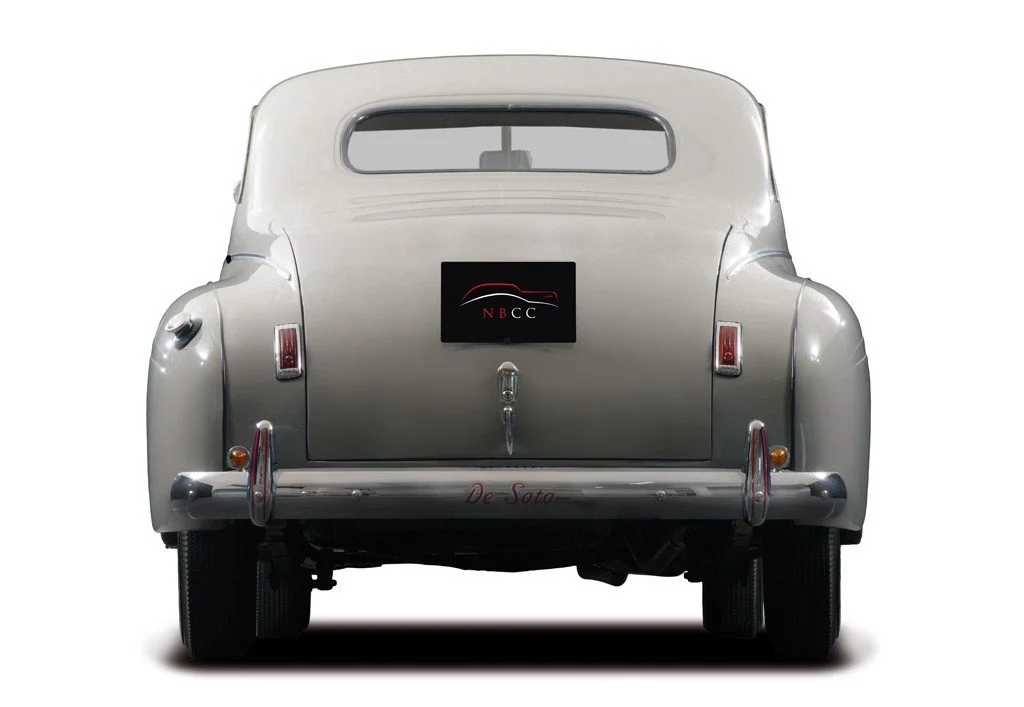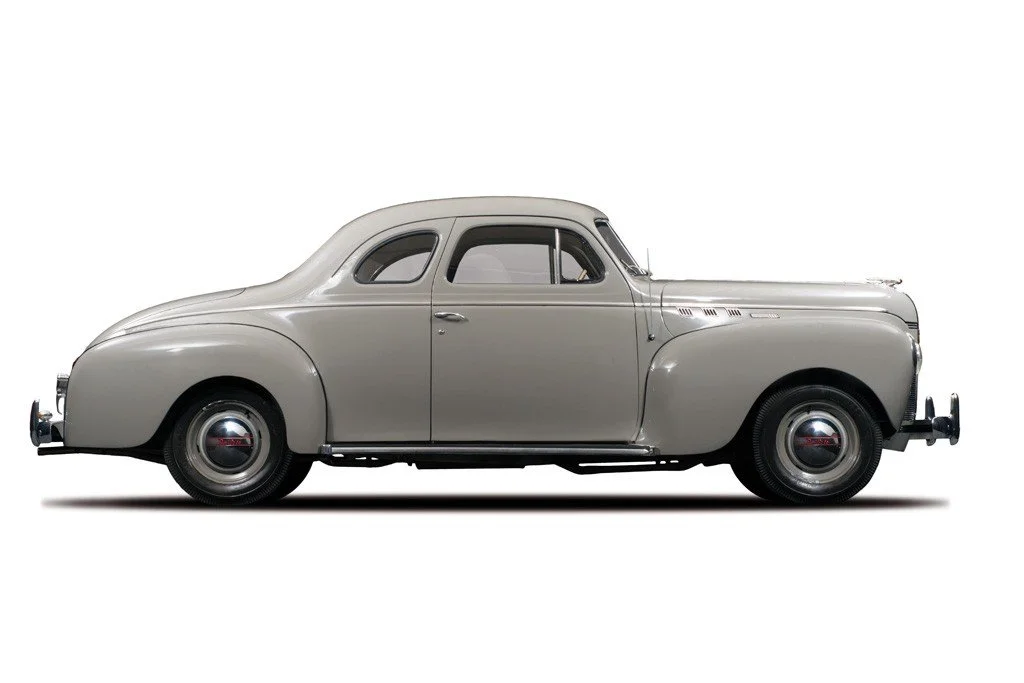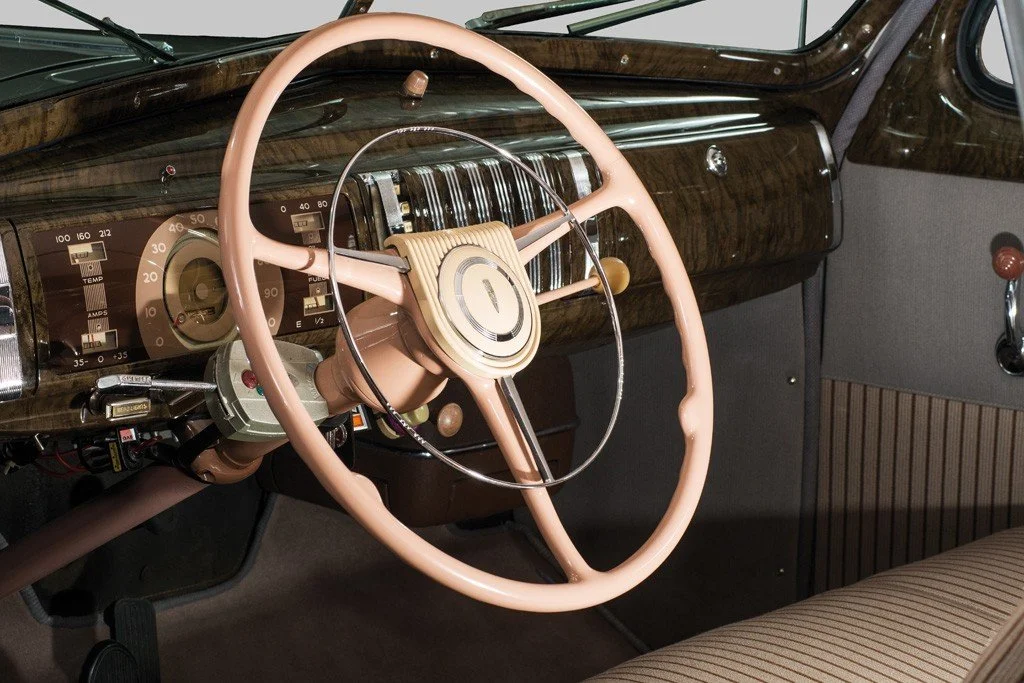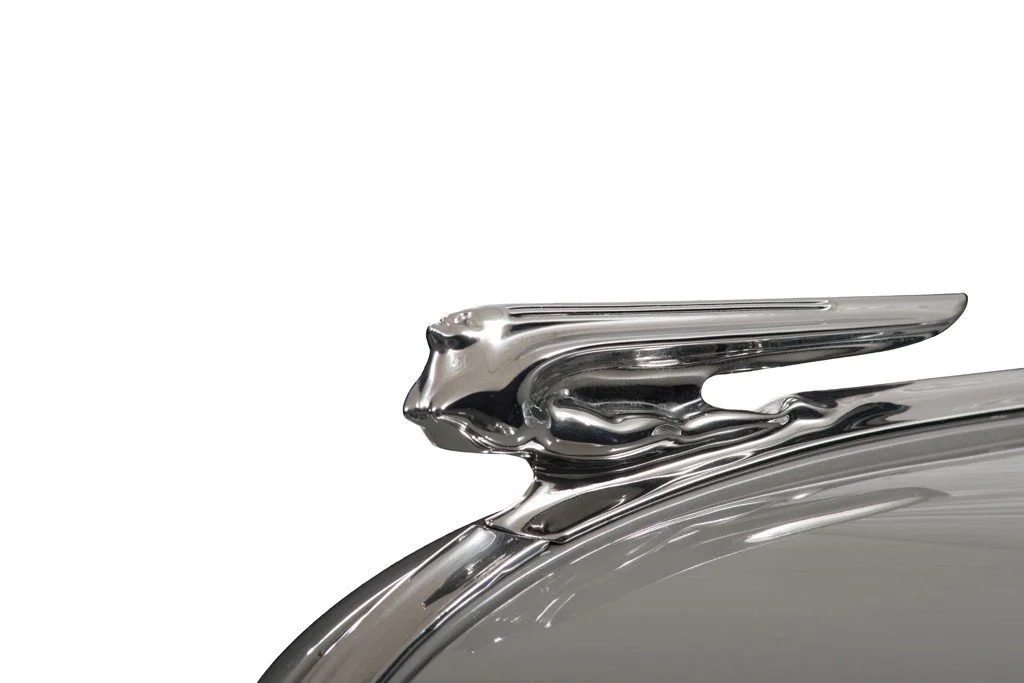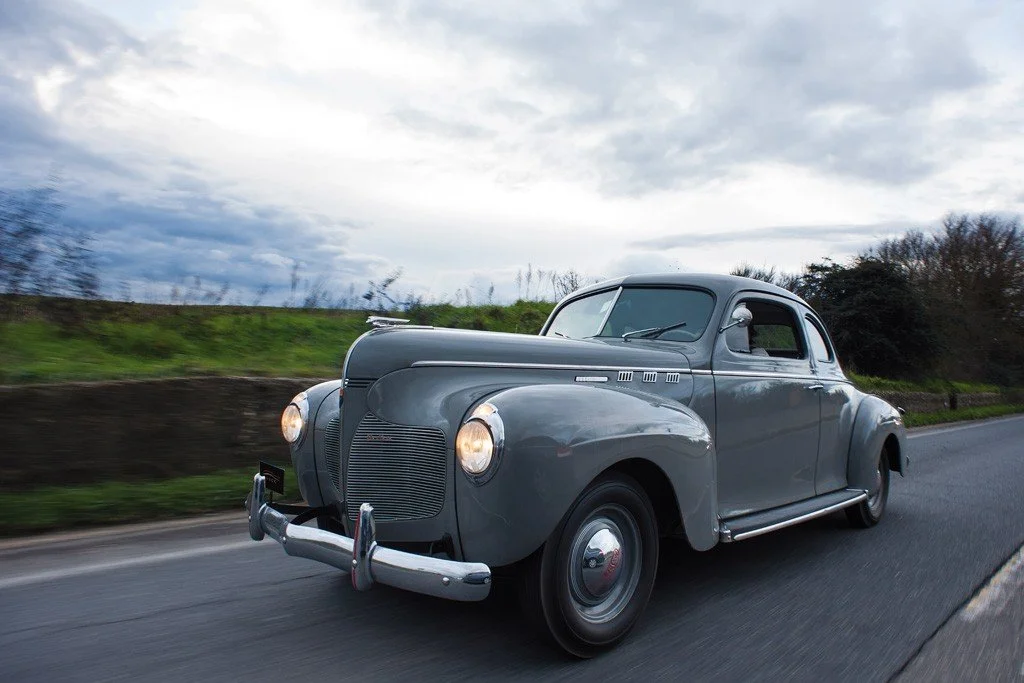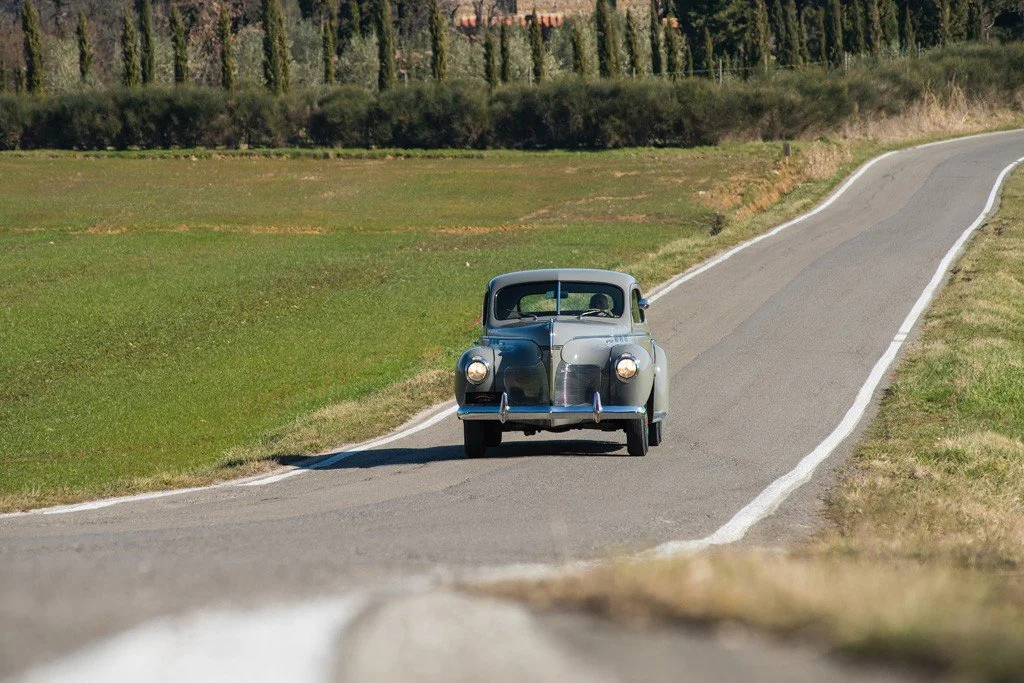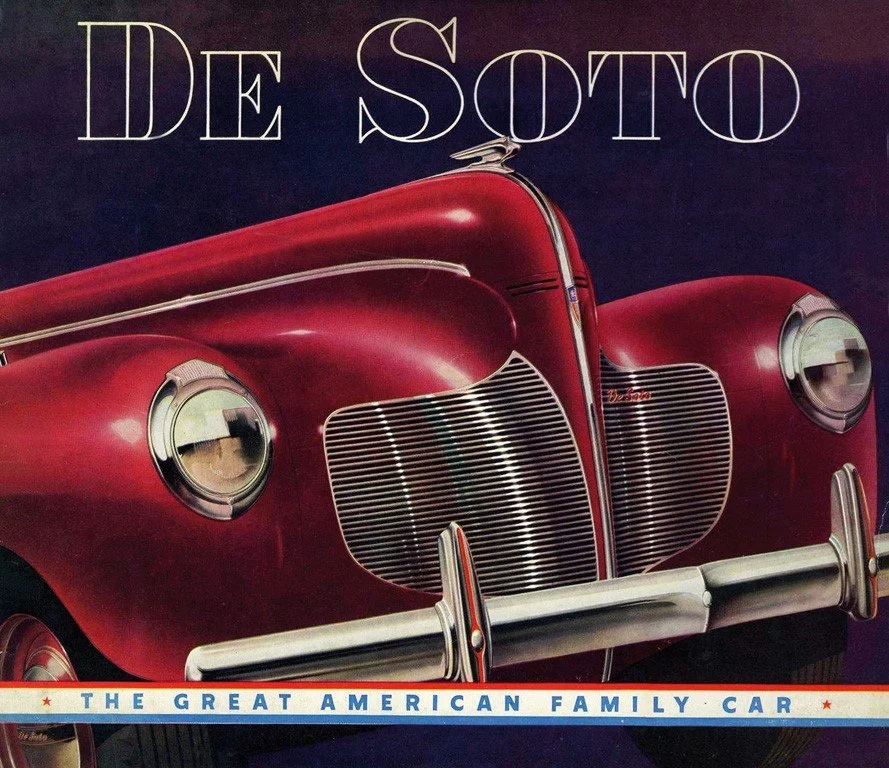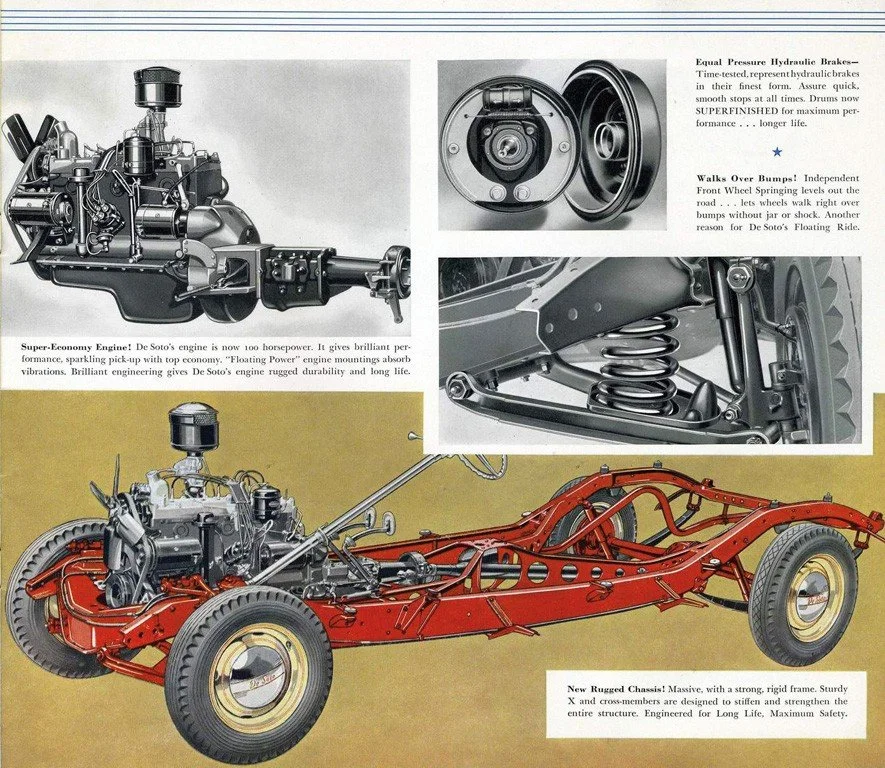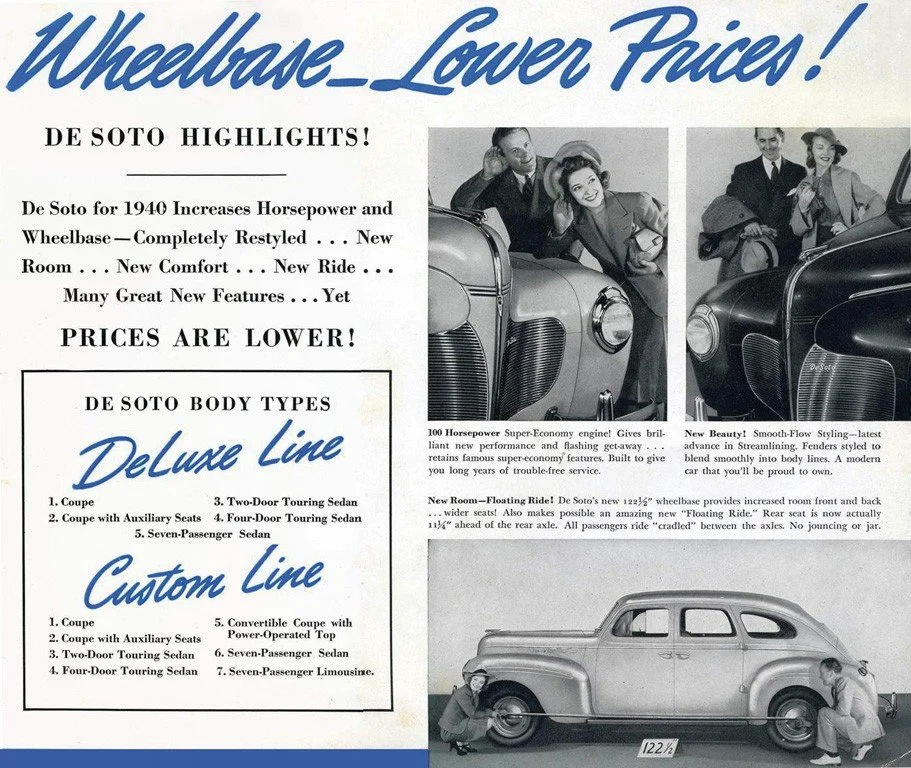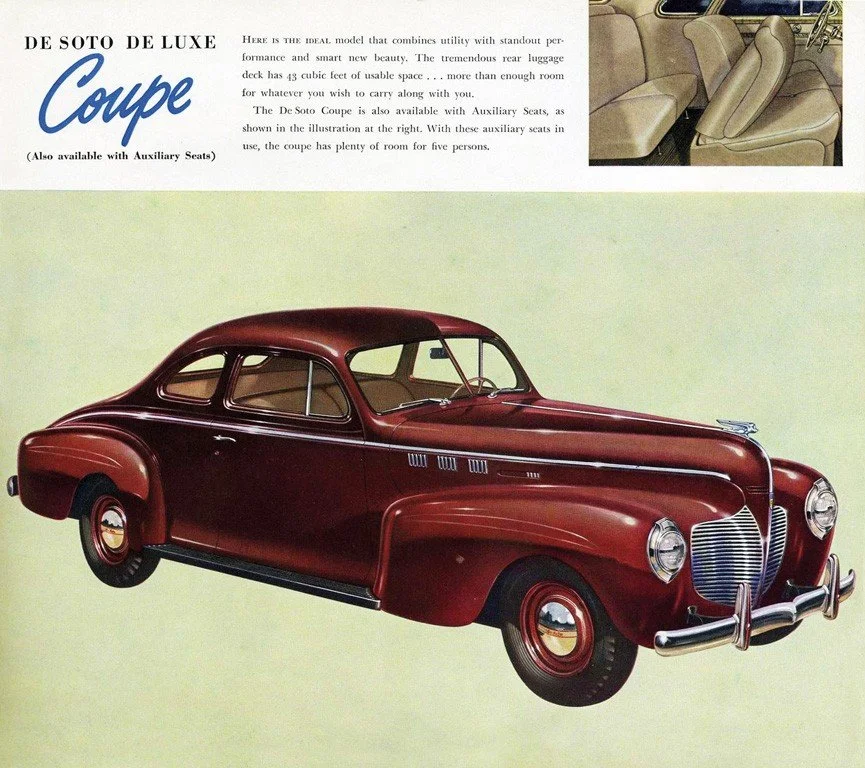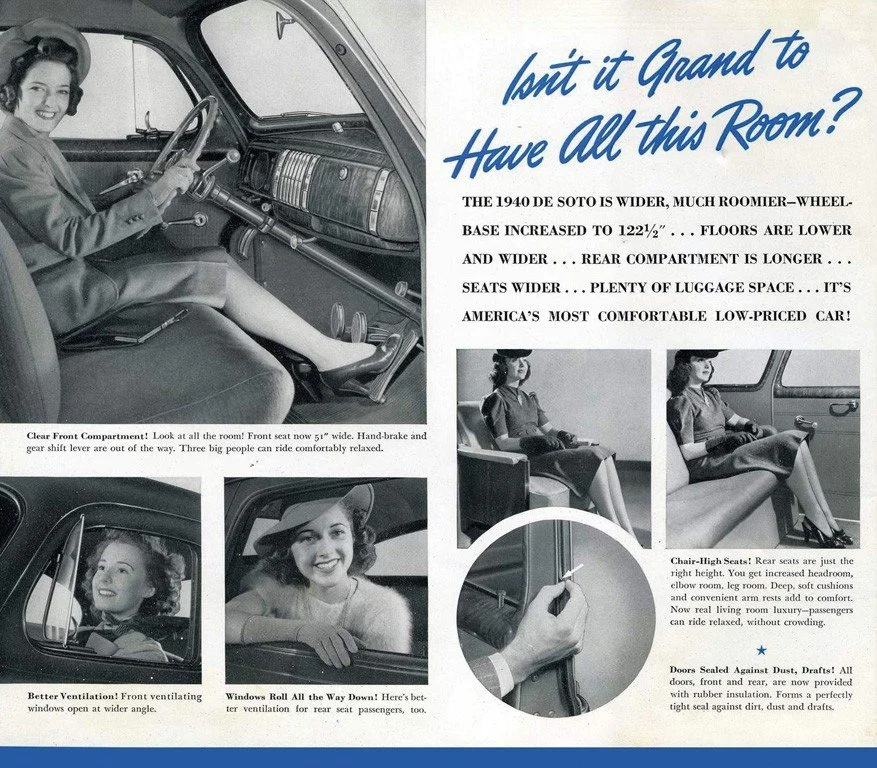-
This DeSoto DeLuxe 2-door Coupe joined the Nicola Bulgari Collection towards the end of the nineties. It was discovered in Rome and bought from the Criss Colombo showroom, which had imported it from the States some years earlier.
In 2000 it was completely restored by Italian specialists, concentrating primarily on the most needy parts like the engine and bodywork together with the chrome.
The body was repainted in the original Hawaiian Blue color of the 1940 DeSoto models while the seats were reupholstered using its Beige cloth with narrow brown stripes. Excellent work was done on the dash, perfectly remade in wood effect, also used for the interior border of the windshield and the finish on the uprights above the doors.
The engine is a six cylinder inline, the standard 228 cubic inches and 105 hp, mounted on elasticated supports (called Floating Power) to cushion vibrations, combined with the manual transmission with three synchronized gears on the steering wheel, the latter in bakelite restored to its original splendor together with the DeSoto logo. -
Company
Chrysler Corp.Wheelbase
122.5inInterior trim
Gray/Beige clothBrakes
front and rear drumsMake
DeSotoLength
202inEngine
inline 6 - 228cidTires
6.00x16Model
DeLuxe CoupeWidth
78.5inCarburetor
1 carb. 2-barrel E6N2Original Price
$905Body style
2-door CoupeWeight
3026lbsHorsepower
105hp @ 3.600rpmProduction
2,098Model year
1940Exterior paint
Pearl GrayTransmission
3-speed manual -
Walter P. Chrysler introduced DeSoto in the summer of 1928. Chrysler's announcement immediately attracted 500 dealers. By the time DeSoto production was in full swing at the end of 1928, there were 1,500 agencies selling the premier 1929 DeSoto Six. Demand skyrocketed. During the first twelve months, DeSoto production set a record of 81,065 cars. DeSoto built more cars during its first year than Chrysler, Pontiac, or Graham-Paige. The record stood for nearly thirty years. The car name honored Hernando de Soto, the 16th century Spaniard who discovered the Mississippi River and covered more North American territory than any other early explorer.
By 1939, DeSoto was ten years old. Parent company Chrysler Corporation was now the second largest automobile manufacturer in the United States, perhaps the world. Chrysler had won the position thanks in large part to the strength of its mid-priced cars like DeSoto. Time had come to flaunt the spoils.
"The extent of design changes and improvements in the 1939 DeSoto," said a 1939 press release, "indicated the lengths to which the Chrysler Corporation has gone to stimulate new car buying. As a part of Chrysler Corporation's $15,000,000 program for new dies and retooling of the 1939/'40 models, several million dollars were spent on the new DeSoto body alone." Maybe that's why DeSoto called the new look Hollywood Style. One ad claimed that “Ginger Rogers drives Hollywood's smartest car - DeSoto!" - "I like action!" Ginger supposedly said. "I get it in my DeSoto."
Ginger didn't need any help, but the 1939 DeSoto was a looker. Those slippery curves that had made the Airflow distinctive were back with a new finesse. Sedans were fastbacks. All models featured curvaceous fenders blown taut by an unfelt wind. Up front was a tall prow suitable for an ocean liner, and enough chrome to blind oncoming drivers.
Engineering had not been neglected. New for 1939 was "Handy-Shift", a gear shift lever mounted on the steering column, which controlled a "Syncro-Silent" three-speed transmission with optional overdrive. Moving engine parts now had a "Superfinish" that increased part life, improved efficiency, and reduced oil consumption.
More light-hearted advances were the "Safety Signal" speedometer that changed color with speed, and the adjustable front seat that raised while it moved forward.
The 1940 DeSotos were even more streamlined. They had more massive fenders and concealed door hinges. The frontal design featured horizontal chrome grille bars in a special configuration having two separate grilles on either side of a V-shaped body color panel in the center. All of the cars had wider front and back seats and larger windows. Both the Deluxe and Custom lines included long wheelbase models. New innovations included sealed beam headlights and an “All-Weather” air control system with dual heater and blower units. Also available, as an option, was the “Simplimatic” Fluid-Drive – a type of semi-automatic transmission.
The 1940 model-year production was up 20 percent to 65,467; good for 13th in the industry.



